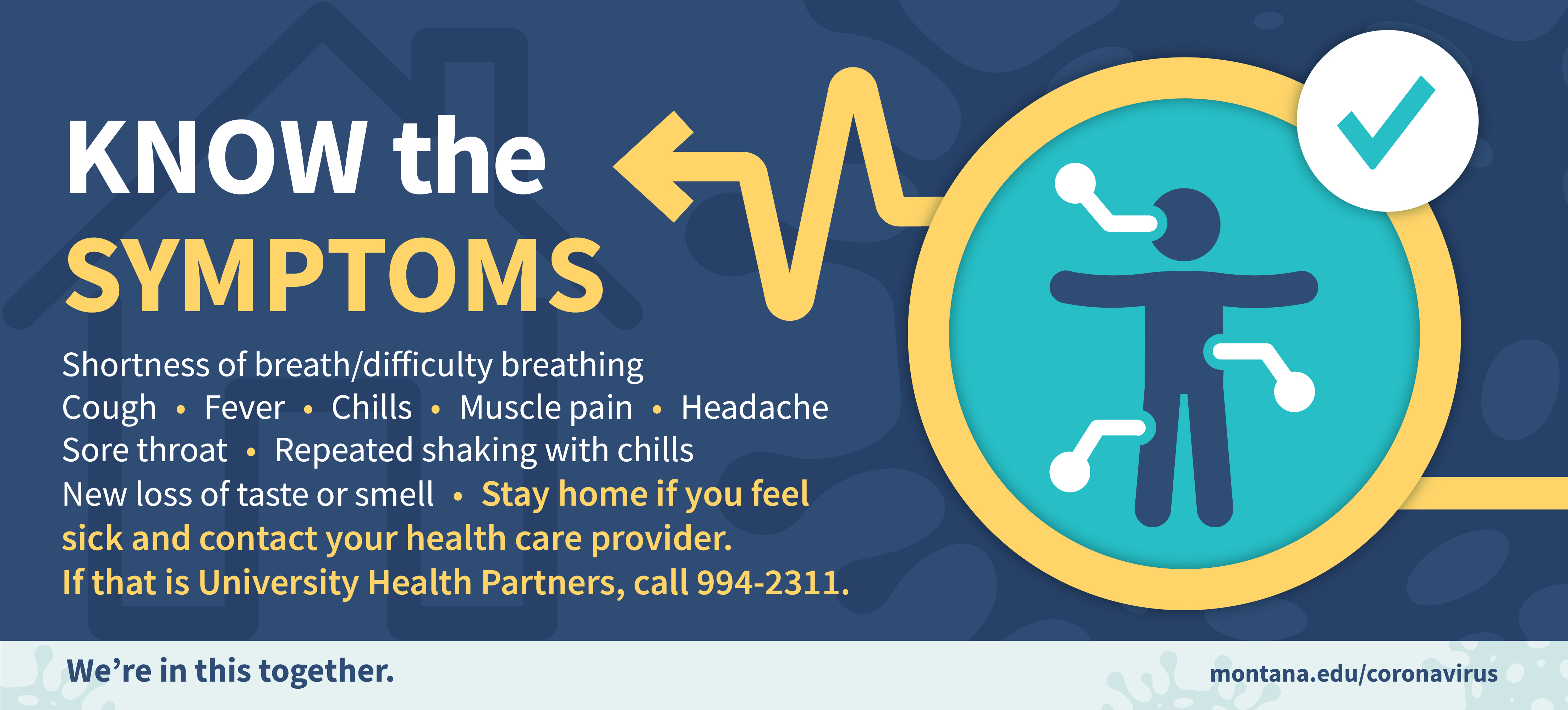Know the Symptoms

A wide range of symptoms of COVID-19 have been reported, ranging from mild symptoms to severe illness. Symptoms may appear 2-14 days after exposure. Older adults and people who have severe underlying medical conditions such as heart or lung disease or diabetes seem to be at higher risk for developing more serious complications from COVID-19 illness, but anyone can have mild to severe symptoms.
According to the CDC, people with these symptoms may have COVID-19:
- Fever or chills
- Cough
- Shortness of breath or difficulty breathing
- Fatigue
- Muscle or body aches
- Headache
- New loss of taste or smell
- Sore throat
- Congestion or runny nose
- Nausea or vomiting
- Diarrhea
This list is not all inclusive. Please consult your medical provider for any other symptoms that are severe or concerning to you.
Self-Checker
MSU's COVID-19 Self-Checkercan help students determine whether testing may be approprate and where to go for a test.
When to Seek Medical Attention
Look for these emergency warning signs for COVID-19 and seek emergency medical care immediately if someone is any of these signs:
- Trouble breathing
- Persistent pain or pressure in the chest
- New confusion or inability to wake or stay awake
- Pale, gray or bluish skin, lips, or nail beds (depending on skin tone)
This list does not contain all possible symptoms. Please consult your medical provider for any other symptoms that are severe or concerning to you. Call 911 if you have a medical emergency. Notify the operator that you have, or think you might have, COVID-19. If possible, put on a cloth face covering before medical help arrives.
Treatment
Information about COVID-19 vaccines
In general, treatment for COVID-19 is primarily supportive care. Mild cases may be treated at home, but severe illness can require hospitalization. Please see these guidelines from Student Health Partners on the common symptoms of viral respiratory diseases and how to respond to them.
What are coronaviruses?
Coronaviruses are a large family of 50-plus distinct viruses which are found worldwide and infect both mammals and birds. Four coronaviruses have been circulating amongst humans for years and are believed to cause 20-40% of common cold infections per year. Two other coronaviruses have caused much more serious human illness since 2002: SARS-CoV and MERS-CoV.
The latest information concerning coronavirus disease 2019 (COVID-19) is available from the Centers for Disease Control and Prevention at https://www.cdc.gov/coronavirus/2019-ncov/index.html.
Updated: Jan. 14, 2022
